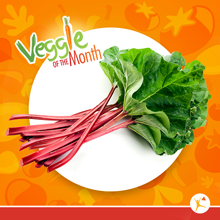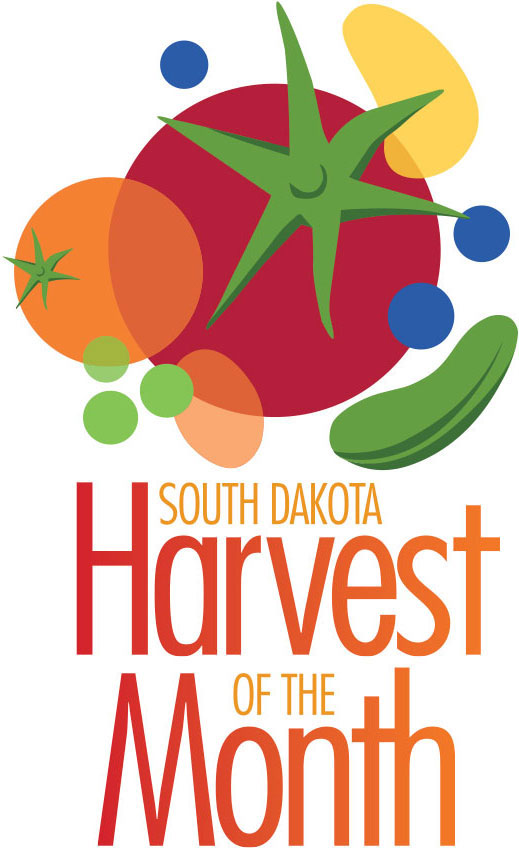The September Vegetable of the Month is Rhubarb!
The first thing to know about rhubarb is that only the stalks of the rhubarb plant can be safely eaten. Rhubarb leaves (cooked or raw) contain toxins that are poisonous.
Did you know…
- Rhubarb is in season during the spring and summer.
- The best stalks are firm and red, not curled or limp. Rhubarb is tart, but red stalks will taste sweeter and richer while green stalks may be more sour.
- Rhubarb is often grown in gardens, but can grow successfully in most areas of a person’s backyard. It can also be spotted around farm buildings and barns.
- It is most often cooked, but the stalks can be eaten raw.
- 1/2 cup of cooked rhubarb equals 1 serving of vegetables—and remember, we want to get at least 5 servings of fruits and vegetables each day!
- Because of its tart flavor, sugar is often added. However, a serving of rhubarb without sugar is only 29 calories! An alternative to adding sugar is to combine with sweeter fruits such as strawberries.
Want to start growing rhubarb in your backyard or garden? Great! Rhubarb grows well in most of the United States. If planting in a garden, plant where it will not be disturbed as it will likely come back each year for five years or sometimes much longer! In South Dakota, it’s best to take a pre-established rhubarb plant and divide the roots. Well-established roots can be dug up and divided into 4 to 8 pieces and replanted in other areas as long as each piece has at least one strong bud. So share with your neighborhood and community! Planting seeds is not recommended except in extremely southern areas of the United States.
Find out more about when to plant, spacing, depth, care, and harvesting and check out this video for helpful tips on freezing for future use.
Learn more about rhubarb and get Avera McKennan’s Executive Chef Drew Laberis’ Easy Rhubarb Lentil Salad recipe with this Pick It! Try It! Like It! fact sheet.
Don’t stop there! Find ways to promote rhubarb at your work, school, childcare, and in your community!
Sources: Pick It! Try It! Like It!, The University of Maine Cooperative Extension, University of Illinois Extension
Can’t get enough fruits and veggies? Be sure to check out Harvest of the Month, a downloadable educational program designed to make learning about fruits and veggies easy, tasty, and fun!


